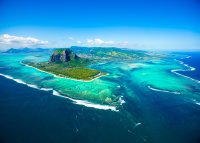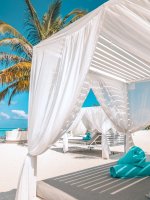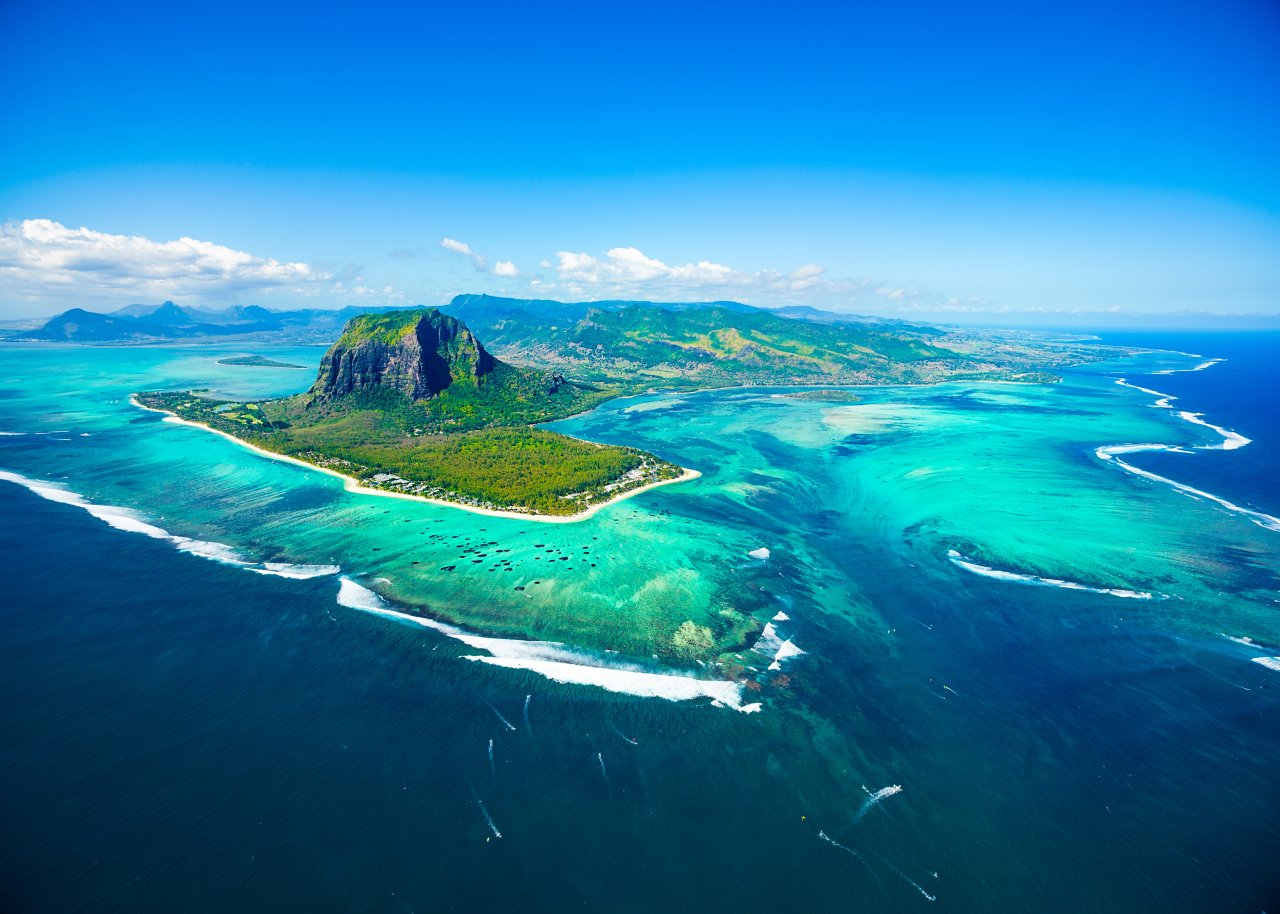On the RN2 between St-Joseph and St-Pierre is the turning to Grande Anse. This is a stunning bay surrounded by densely wooded slopes, with a wonderful white-sand beach. Swimming, however, is only safe in the purpose-built pool. It’s a perfect place for a picnic, with barbecue areas scattered amongst the palm trees. Unfortunately, this means it can be unpleasantly crowded on weekends. There is a cave in the cliffs around which clouds of Mascarene swiftlets wheel and scream excitedly. From the hillside you can see Réunion’s only outlying island, Petit Ile, a nesting site for birds.
St-Pierre is the largest town in the south, home to some 70,000 people. To call this town bustling is putting it mildly. St-Pierre is especially popular with Réunionnais holidaymakers, who prefer to come here while the French head for glitzy St-Gilles.
The focal point of the town is Boulevard Hubert Delisle, the road along the seafront. It is strewn with restaurants, ice-cream parlours and bars, as well as a casino. Across the road from the casino is a stretch of white, sandy beach – nothing to write home about, but adequate nevertheless. The park in front of the beach has undergone a makeover and it is now a very pleasant place to sit, although it still attracts the odd drunk in the evenings. During winter the strong winds around St-Pierre can make the beach a no-go zone. Snorkelling in the lagoon just off the beach is very rewarding and you’ll invariably see many people doing just that.
The harbour, which is to the east of the beach, has also been expanded and smartened up, with a little help from the European Union. It now boasts a wide promenade and brand-new shops. Nearby, opposite the Café de la Gare, is the Bassin de Radout, a dry dock preserved since the 19th century.
The area around the seafront is gradually acquiring a mildly European feel, with designer clothing shops creeping in, but as you climb the hill into the main part of the town that European ambience fades. The town centre, with its numerous (particularly Chinese and Indian) clothing stores, boutiques, bars and restaurants, brings to mind images of urban southeast Asia or Mauritius, rather than Europe. Despite all the recent ‘smartening up’, St-Pierre remains a Réunionnais town and the people are genuinely welcoming and helpful.
As you head up Rue François de Mahy, away from the seafront, you’ll pass an ornate mosque. Provided you dress respectfully, you are welcome to visit between 09.00 and midday and from 14.00 to 16.00 (material is provided to cover your legs). The town hall at the southern end of Rue Archambaud is worth a look for its colonial architecture. It was formerly a coffee warehouse owned by the French East India Company, built between 1751 and 1773.
There is a covered market (marché couvert) on Rue Victor le Vigoureux, selling a good range of handicrafts (mostly from Madagascar), as well as fruit, vegetables and spices. On Saturdays, a street market operates at the far western end of Boulevard Hubert Delisle (which is blocked off to cars), selling more of the same and is well worth a visit. Although the market now sells many touristy souvenirs, it is a great place to see locals doing their weekly shop, stocking up on fruit and vegetables, buying live chickens, and – equally important – catching up on the week’s gossip. Watch out for the stall that sells delicious, freshly squeezed sugarcane juice. Try to get to the market early – it’s all finished by noon. Talking of shopping, Cazal (% 0262 353535; librairiecazal.com), at 39 Rue Désiré Barquisseau, is a very good bookshop.
Also at the western end of Boulevard Hubert Delisle is the cemetery, where Hindu, Chinese and Christian graves lie side by side. The most-visited grave of all is that of the African sorcerer and murderer, Simicoundza Simicourba, better known as Le Sitarane. (See box Le Sitarane, page 309).
The seafront at the western end of town has been redeveloped in recent years and now has a children’s playground, funfair and snack bars. Out on the water you are likely to see kitesurfers, particularly on one of St-Pierre’s windy days. The Centre Commercial du Grand Large has a large supermarket, as well as other smaller shops.
About 10km north of St-Pierre on the RN3 is Le Tampon. Many of those who work on the south coast choose to live in or around Le Tampon, which enjoys a cooler climate. The town itself is of little interest, except that it is en route to La Plaine-des-Cafres, and therefore the volcano. Le Tampon is best known for the flower festival (Florilège) held there annually in October.















